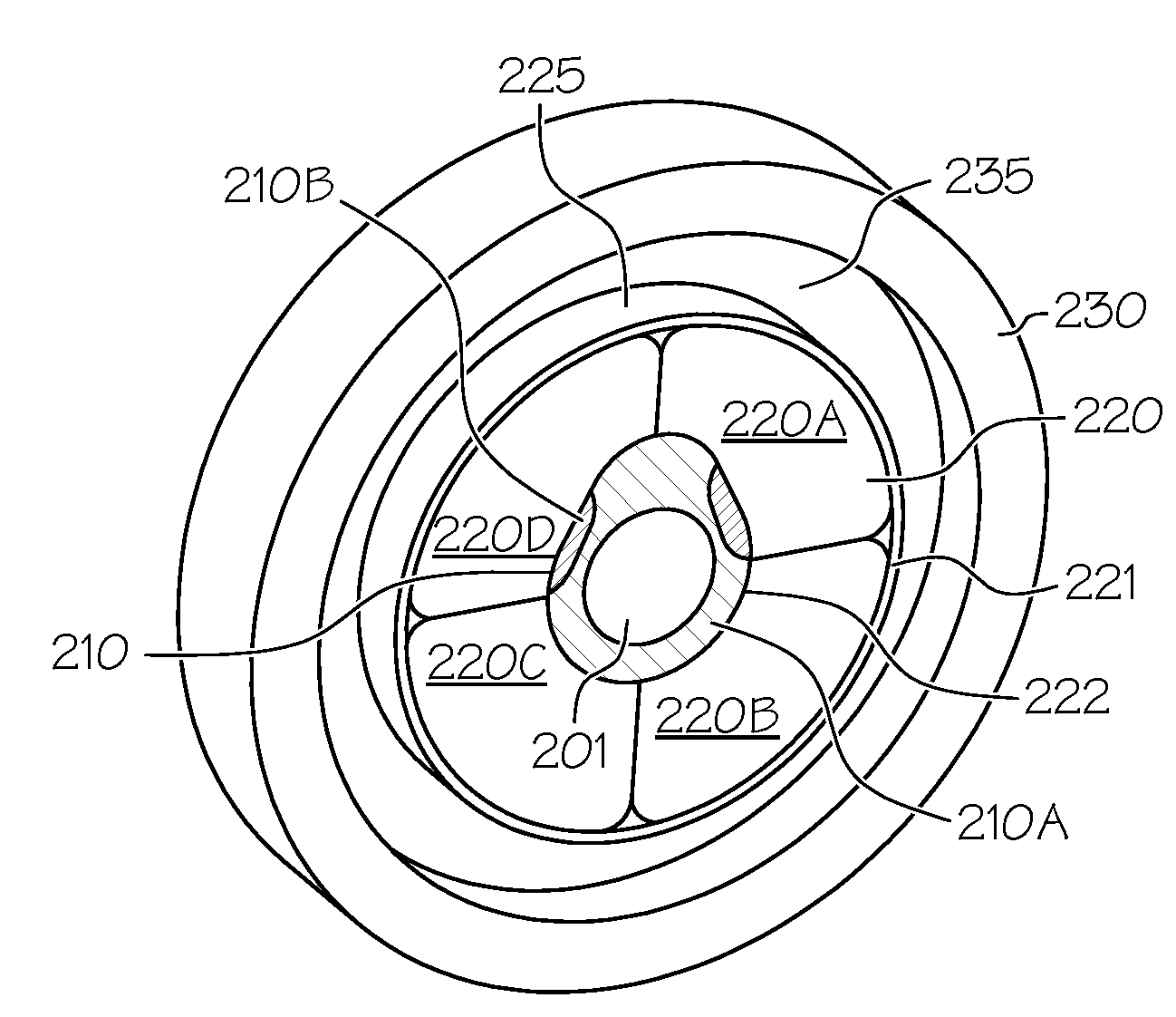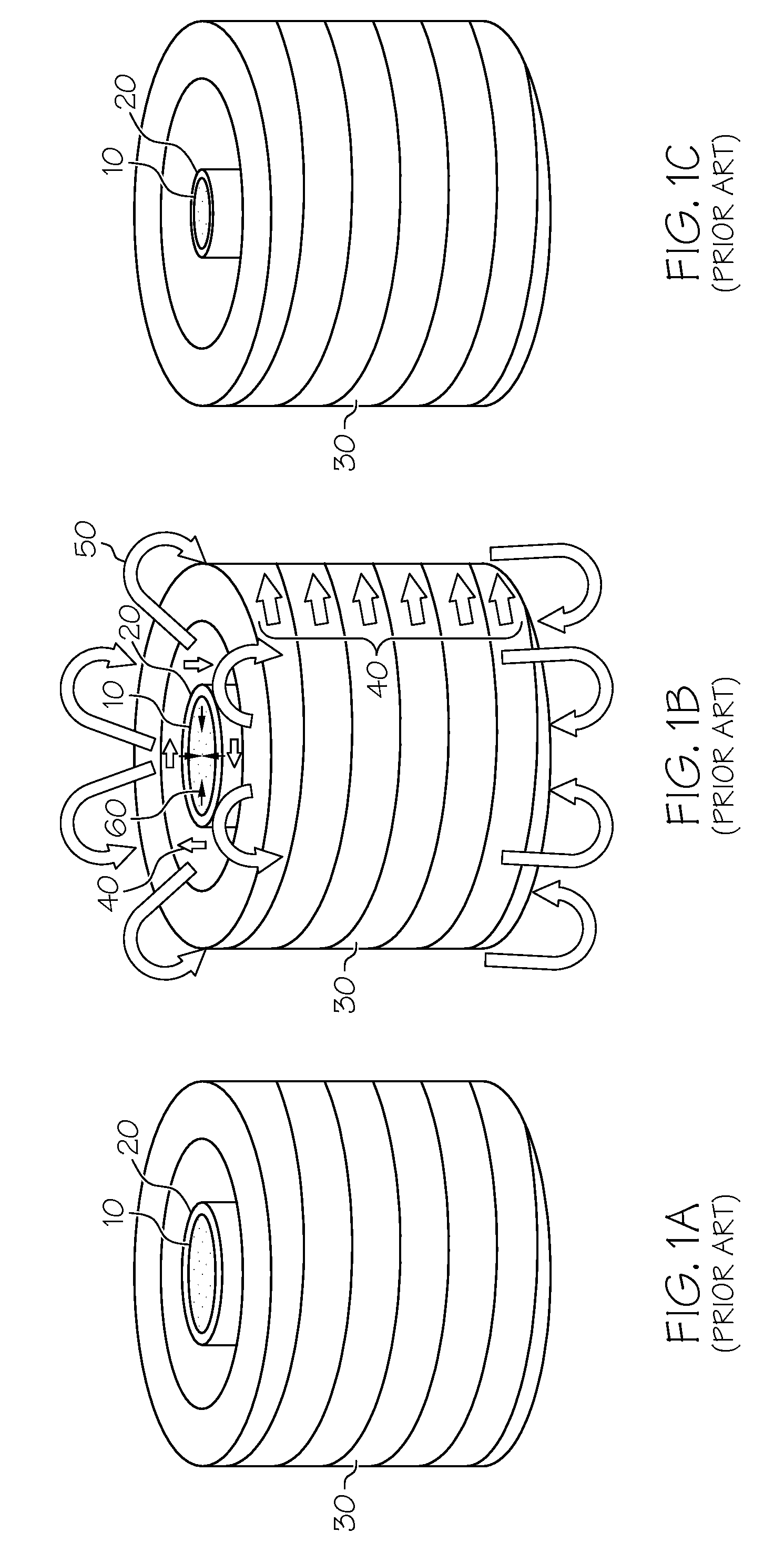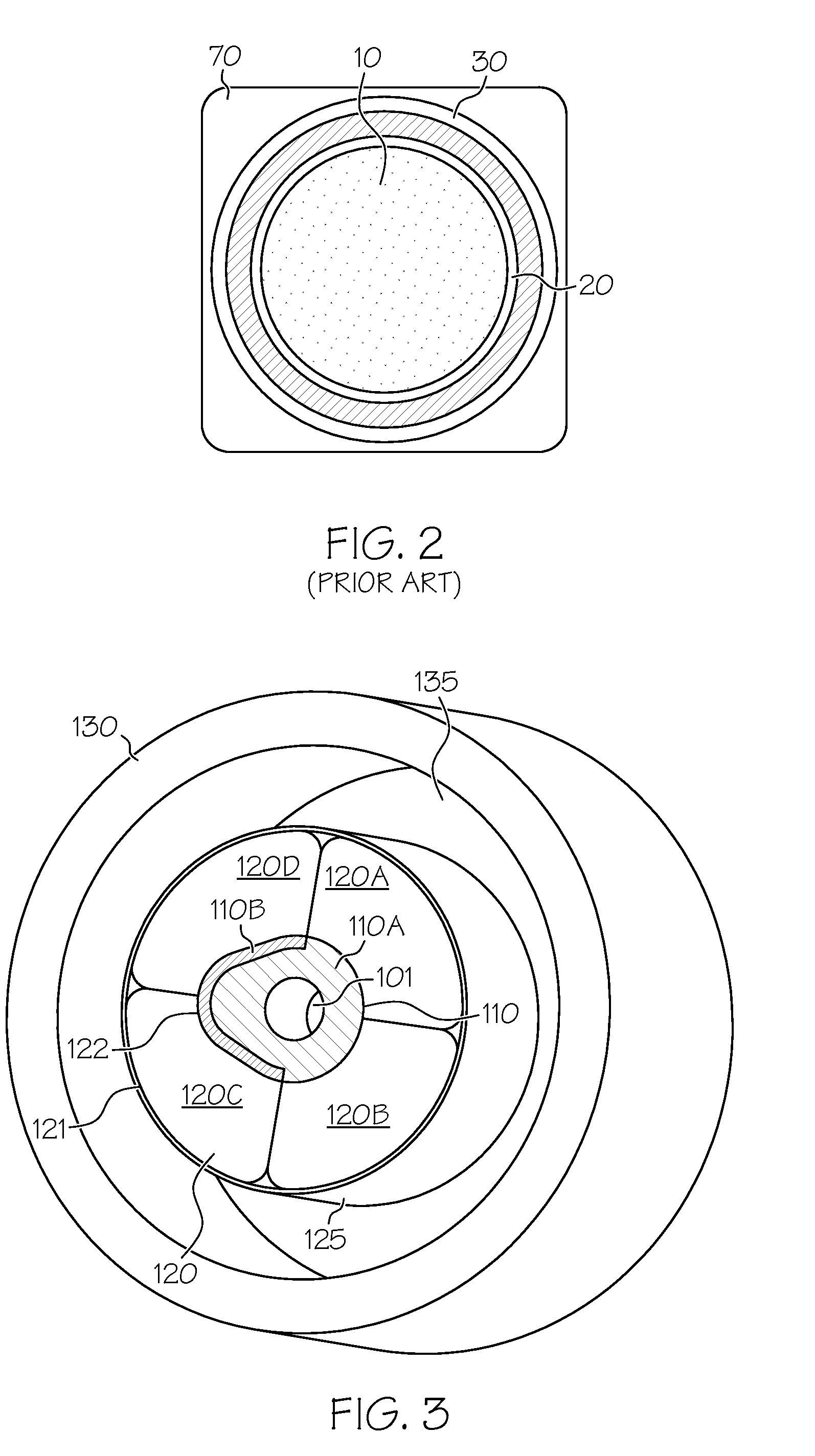Camshaft lobe and method of making same
a camshaft and lobe technology, applied in the field of camshaft lobe manufacturing, can solve the problems of inconvenient use of conventional manufacturing methods, inability to tailor a particular material's desirable properties, heavy load, and inability to meet the requirements of the application, and achieves superior properties, high load, and wear.
- Summary
- Abstract
- Description
- Claims
- Application Information
AI Technical Summary
Benefits of technology
Problems solved by technology
Method used
Image
Examples
Embodiment Construction
[0018]Referring initially to FIGS. 1A through 1C, the DMC process according to the prior art is shown, where a generally cylindrical-shaped component is produced. FIG. 1A shows a powder material 10 placed within an electrically conductive cylindrical armature 20. A coil 30 is connected to a direct current power supply (not shown) such that electric current can be passed through the coil 30. The powder material 10 substantially fills the electrically conductive armature 20 (also called a sleeve). Referring with particularity to FIG. 1B, a large quantity of electrical current 40 is made to flow through the coil 30; this current induces a magnetic field 50 in a normal direction that in turn sets up magnetic pressure pulse 60 that is applied to the electrically conductive container 20. This radially inward pressure acts to compress the container 20, causing the powder material 10 to become compacted and densified into a full density parts in a very brief amount of time (for example, les...
PUM
| Property | Measurement | Unit |
|---|---|---|
| voltage | aaaaa | aaaaa |
| tribological properties | aaaaa | aaaaa |
| shape | aaaaa | aaaaa |
Abstract
Description
Claims
Application Information
 Login to view more
Login to view more - R&D Engineer
- R&D Manager
- IP Professional
- Industry Leading Data Capabilities
- Powerful AI technology
- Patent DNA Extraction
Browse by: Latest US Patents, China's latest patents, Technical Efficacy Thesaurus, Application Domain, Technology Topic.
© 2024 PatSnap. All rights reserved.Legal|Privacy policy|Modern Slavery Act Transparency Statement|Sitemap



